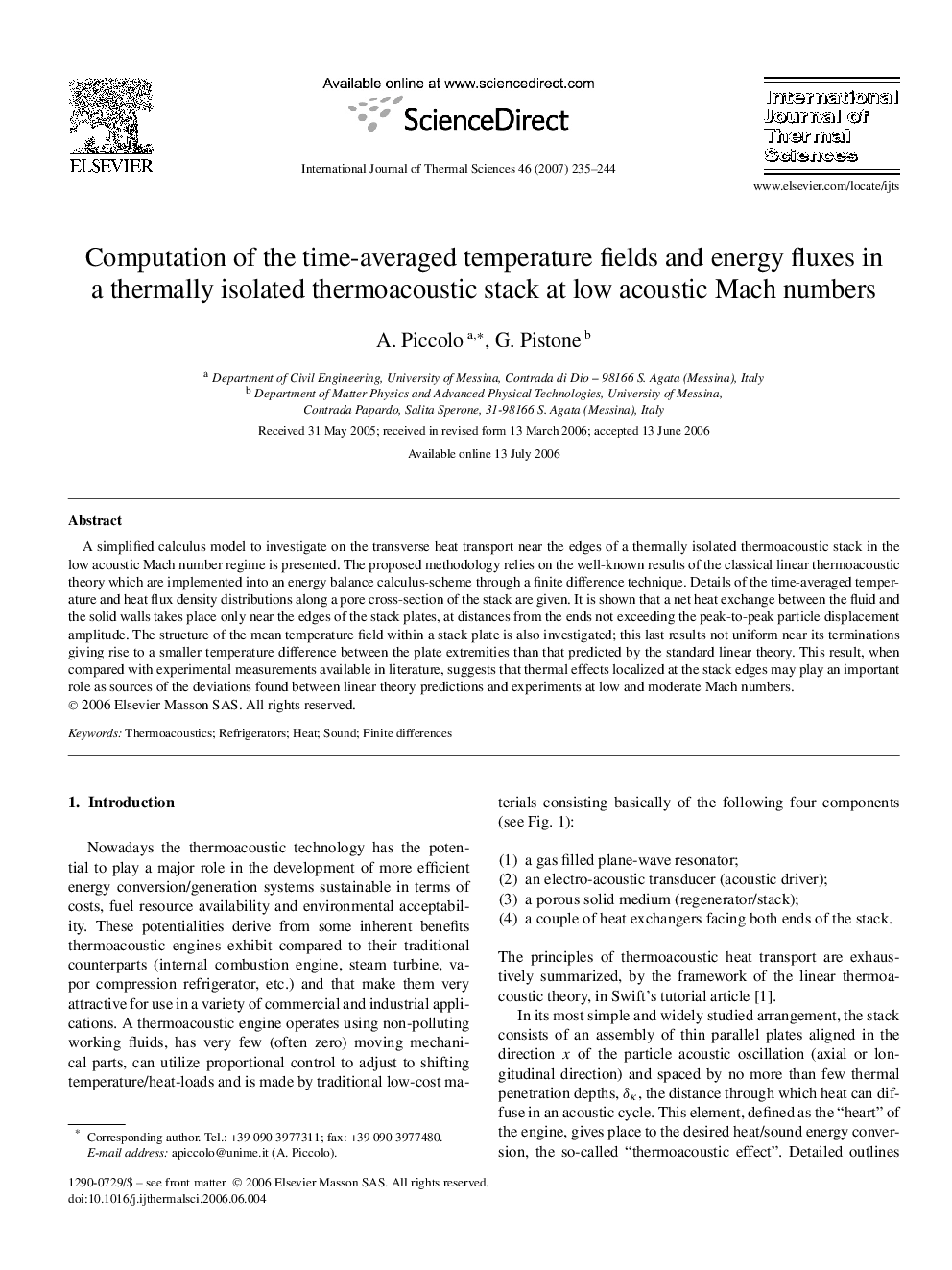| Article ID | Journal | Published Year | Pages | File Type |
|---|---|---|---|---|
| 670053 | International Journal of Thermal Sciences | 2007 | 10 Pages |
Abstract
A simplified calculus model to investigate on the transverse heat transport near the edges of a thermally isolated thermoacoustic stack in the low acoustic Mach number regime is presented. The proposed methodology relies on the well-known results of the classical linear thermoacoustic theory which are implemented into an energy balance calculus-scheme through a finite difference technique. Details of the time-averaged temperature and heat flux density distributions along a pore cross-section of the stack are given. It is shown that a net heat exchange between the fluid and the solid walls takes place only near the edges of the stack plates, at distances from the ends not exceeding the peak-to-peak particle displacement amplitude. The structure of the mean temperature field within a stack plate is also investigated; this last results not uniform near its terminations giving rise to a smaller temperature difference between the plate extremities than that predicted by the standard linear theory. This result, when compared with experimental measurements available in literature, suggests that thermal effects localized at the stack edges may play an important role as sources of the deviations found between linear theory predictions and experiments at low and moderate Mach numbers.
Related Topics
Physical Sciences and Engineering
Chemical Engineering
Fluid Flow and Transfer Processes
Authors
A. Piccolo, G. Pistone,
